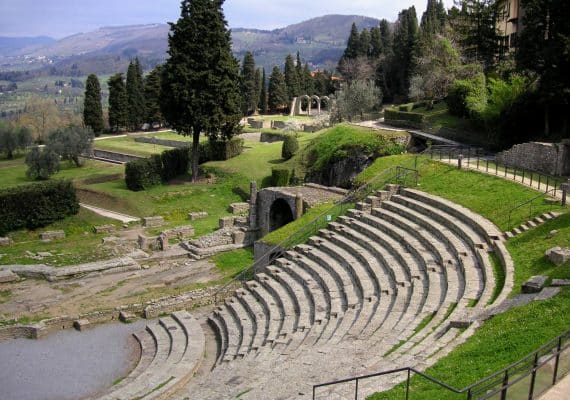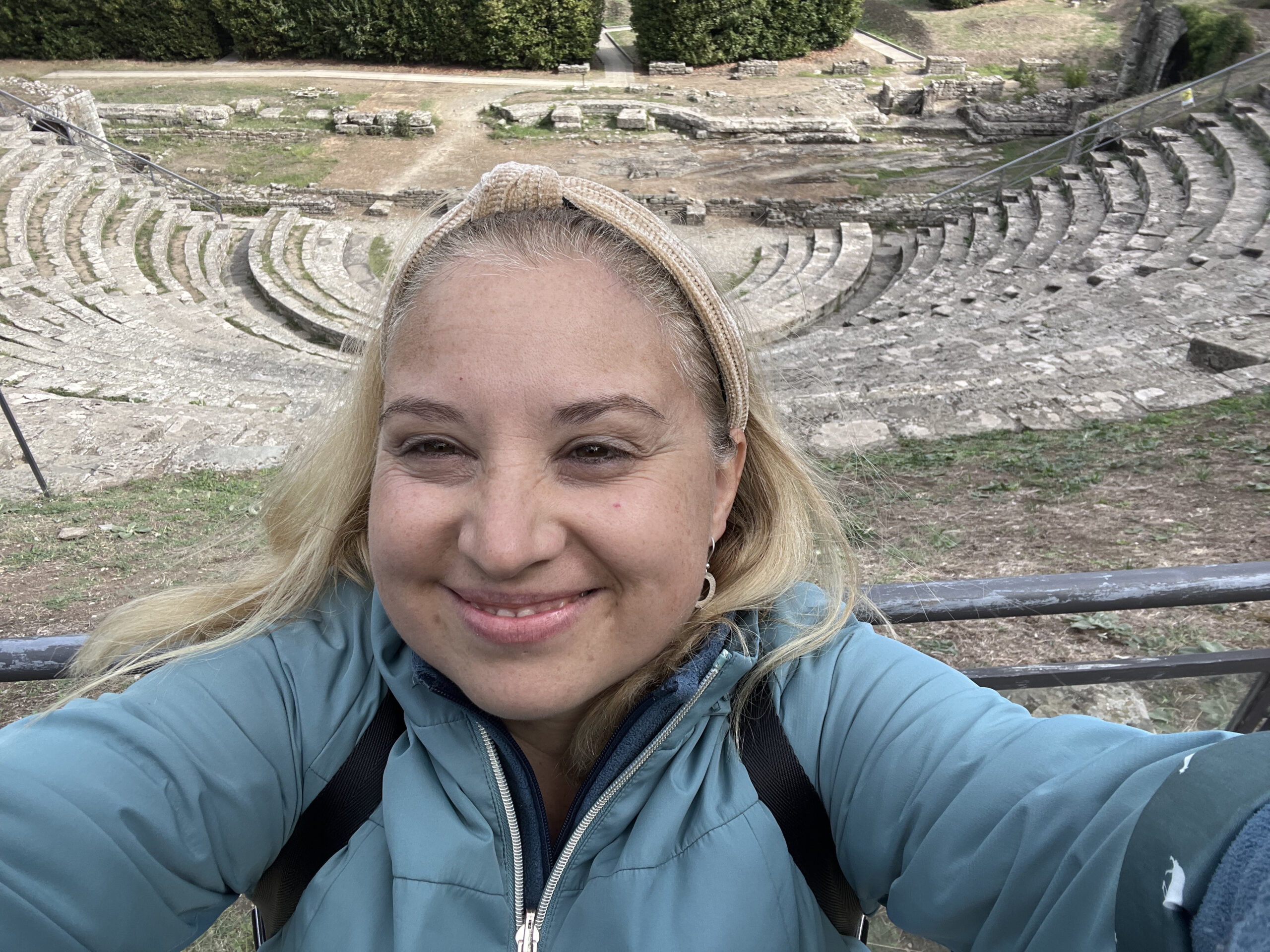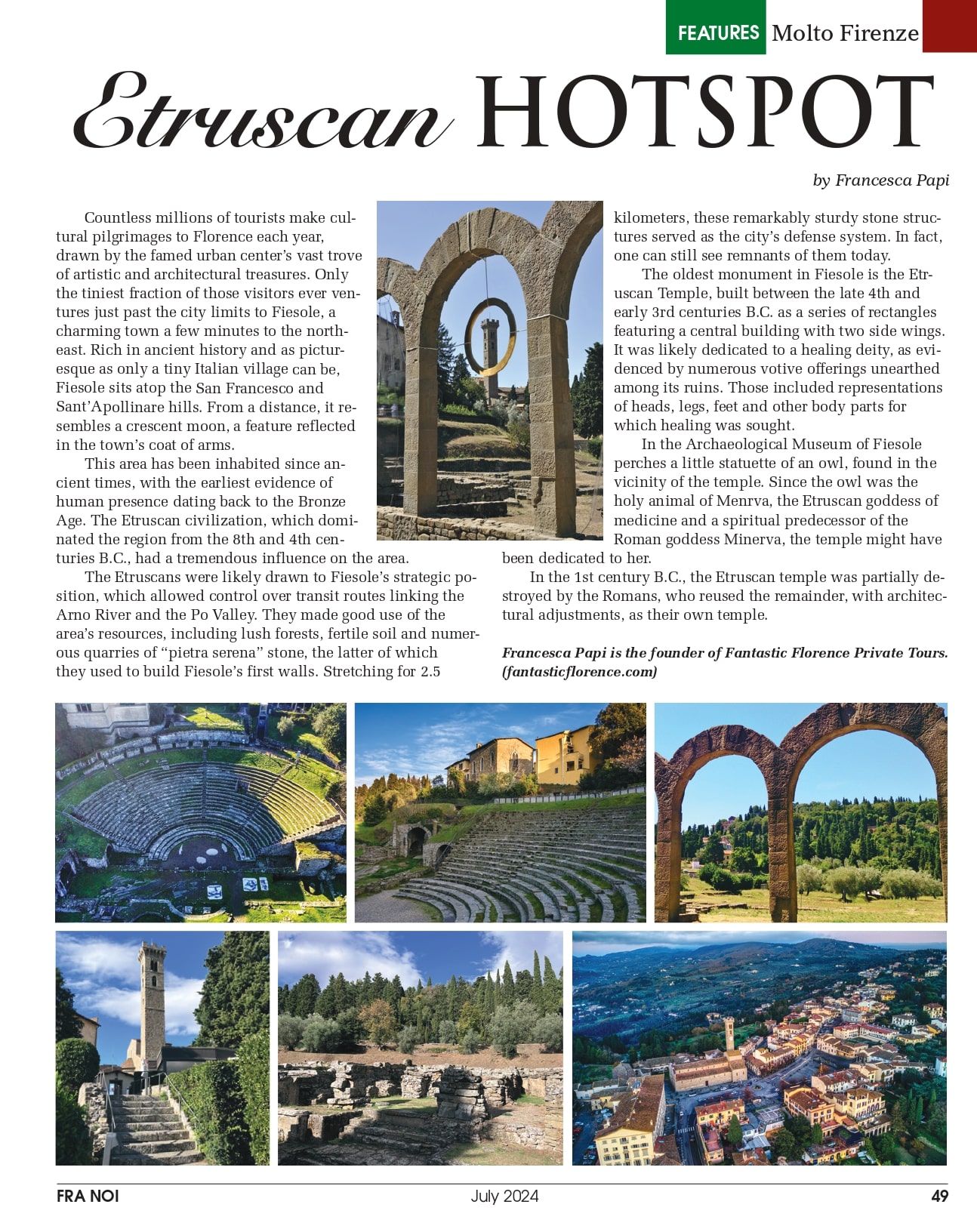
The origins of Fiesole
Fiesole is the perfect escape from the city. It’s only half hour from Florence. You just have to book my Tour of Fiesole and come uphill! The history of Fiesole has always been a bit legendary. It’s even attributed to king Atlas, whose mythical children were three: Italo, naming Italy; Dardano, founding Troy; Sicano, conquering Sicily and giving it his name. These mythological details clearly show Fiesole’s ancient prestige. Transitioning from legends to actual history of Fiesole, the first evidence goes back to the 6th century B.C., with an initial settlement of a population called “Villanoviani”, ancestors of the Etruscan civilization. Back when Florence was only a marshy area with no inhabitants at all, Fiesole led this Etruscan region. The fully navigable Arno was its main route. Despite not being an Etruscan capital, Fiesole held significant military importance. It was a formidable rival to Rome, showing its strength when giving refuge to the defeated Tarquins around 500 B.C.E. (a family of Roman kings but with Etruscan origins).
The history of Fiesole under Rome
Fiesole fought alongside the Romans in the Battle of Cannae (Second Punic War) against the Carthaginian army conducted by Hannibal. Nevertheless, it later opposed Rome during the Social War. It joined a federation of Italian populations aiming to diminish Roman power. Supporting Marius, it established a military outpost. Eventually subdued by Rome, Fiesole gained prominence during Catiline’s conspiracy, serving as the conspirators’ capital. The city saw its decline after Catiline’s defeat in 63 BCE. Some interpret Florence’s foundation, shortly after (59 BCE), as a Roman move to decrease Fiesole’s significance. Indeed, the punishment worked. Over time, Fiesole steadily lost its economic and political importance to rival Florence. However, details about the prolonged period of Florence’s rise and Fiesole’s decline are scarce in historical records for the entire region.
Fiesole and its first Christian Saint
The earliest known event in Christian Fiesole is the martyrdom of San Romolo, appointed the first Bishop by the same Saint Peter. This took place in 67 CE. Actually, Fiesole’s cathedral is entitled to San Romolo. During the extended period of barbarian invasions, the history of Fiesole was marked by crucial passageway for hordes attempting to cross the Apennines en route to Rome. In fact, it witnessed numerous important battles, including the final clash between Stilicho and Alaric near Montereggi, leading to a terrible devastation.
History of Fiesole: the Lombard domination

Following the Gothic War, Fiesole faced the invasion of the Lombards in 568 CE. The Lombard domination left richer archaeological evidence, including the necropolis and numerous tombs. Lombard kings held extensive territories in the Florentine and Fiesolan regions, still remembered by names like Careggi (King’s House), Camporeggi (King’s Field), and Montereggi (King’s Mountain). After the Lombard rule and the onset of the Carolingian era in 825, a pirate gang sailed up the Arno to Florence. Their plundering reached the Fiesole Abbey (Badia Fiesolana, seat today of European University Institute-EUI), then the Bishop’s seat. Then, in 829, the Irish pilgrim Donato, later known as San Donato di Scozia, was invested with the episcopal dignity. He’s buried inside the Duomo of Fiesole. However, it was only with Jacopo, known as “il Bavaro” for his noble Bavarian lineage, that the Cathedral of San Romolo became the Bishop’s seat, bringing the center of worship within the city walls.
Fiesole and Florence: who’s the mother of whom?

Fiesole and Florence quickly became bitter enemies. The Etruscan-Roman fortifications had long been destroyed, but due to its elevated position on a natural rock, Fiesole was seen by the Florentines as a constant threat and an unacceptable limitation to their dominance. War broke out in 1123 and it changed for ever the history of Fiesole. After intense clashes in 1125, Florence launched the final assault. Consequently, Fiesole was besieged, its heights occupied, and access routes cut off. After ten weeks, Fiesole fell, the city nearly destroyed, and many inhabitants taken prisoner. This secured Florence’s supremacy over the region. Later, Fiesole aligned with Florence. In 1450, Fiesolan statutes were proclaimed, and in 1463, the construction of Palazzo Pretorio began, serving as Fiesole’s municipal center since.
The Renaissance in Fiesole
With its political role diminished, Fiesole retained significant cultural importance. Nevertheless, the history of Fiesole played a prominent part in the development of the Renaissance, leaving behind many cultural landmarks in its surroundings. The Medici family and their court also cherished Fiesole, earning the city a prominent role in the Florentine Renaissance. Cosimo the Elder played a key role, expanding the Fiesole Abbey and enriching the cathedral with sculptures by Mino da Fiesole. In fact, Fiesole, with its local stone from the renowned Maiano quarries in serene and gray varieties, was fundamental in the Renaissance period. The “pietra serena” from Fiesole was indeed a crucial material for Renaissance sculptors and architects like Brunelleschi and Mino da Fiesole.
The Medici villa in Fiesole
In 1458, the Medici commissioned Michelozzo to build the splendid villa that bears their name.
Villa Medici in Fiesole is the first example where the idea of a country residence breaks away from the traditional concept of a fortress or castle. The strict relationship with the landscape, through the new use of loggias and terraces, is the emblem of future Renaissance Villas. Therefore, this became the headquarters for the renowned Humanistic Academy of Marsilio Ficino, Giovanni Pico della Mirandola, Cristoforo Landino, Agnolo Poliziano and many others. The Grand Ducal period brought few significant changes to Fiesole, except for an attempted transformation of the Sant’Alessandro’s basilica into a cemetery, thwarted by the opposition of the Fiesolani.
Modern times in Fiesole
In the late 19th century, during the Capital of Italy period in Florence (1865-71), archaeological excavations commenced in Fiesole. They revealed the ancient structures that we can admire nowadays it, initiating a process to reclaim the city’s glorious history. In 1944, occupied by Nazi troops, Fiesole endured prolonged bombardment by the Allies. During this time, three heroic Carabinieri, to prevent German reprisals on civilians, voluntarily surrendered and were killed. This sad incident was memorialized by a monument in Fiesole’s public gardens. Currently, Fiesole is home to around 15,000 people, with a significant presence of foreigners, especially due to EUI, to the prestigious school of music (Scuola di Musica di Fiesole) and some American universities (Georgetown, Harvard). Our Fiesole, ancient and beautiful, unveils archaeological treasures, museums, convents, and villas for visitors. Yet, it’s unique offering a captivating landscape.

